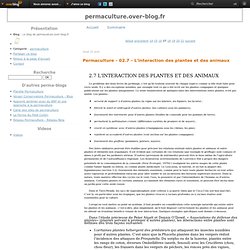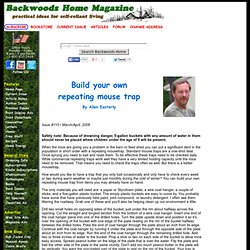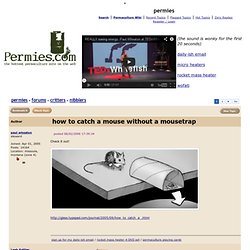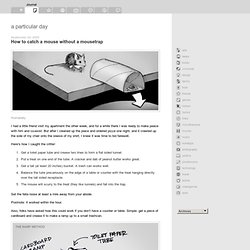

Chicken Raising. Bisons d'Europe. Le Bison d'Europe — Bison bonasus S'il y a une chose que le bison d'Europe (Bison bonasus) déteste, c'est bien d'être confondu avec son cousin américain (Bison bison).

Voilà bien dix à quinze mille ans qu'ils font lit et continent à part, depuis la dernière grande glaciation. De ce passé commun, ils conservent une allure similaire même si plusieurs caractéristiques permettent de les distinguer sans s'y tromper. L'Européen se tient plus droit, sa bosse est moins prononcée. Ses cornes sont aussi moins écartées car il fréquente la forêt contrairement à son parent d'outre-Atlantique qui ne se plait qu'en plaine. Cela fait du bison le plus gros mammifère terrestre d'Europe. La vie en société. Le blog de permaculture.over-blog.fr. Le problème des bons livres de jardinage, c'est qu'ils traitent souvent de chaque espèce comme si elle était faite pour vivre seule.

Il y a des exceptions notables, par exemple tout ce qui a été écrit sur les plantes compagnes et quelques publications sur les plantes antagonistes. La seule énumération de quelques-unes des interrelations entre plantes, n'est pas inutile. Advice: Making a nestbox. Print page 18 September 2008 What you need Natural nest holes do not come in standard sizes, so use these dimensions only as a guide.

Any plank or sheet of about 15 mm thick weatherproof timber is suitable. However, do not use CCA pressure-treated timber, since the leachates may harm birds. Dimensions The plan gives measurements for a small and a large box. The bottom of the entrance hole must be at least 125 mm from the floor of the nestbox. Putting it together Drill drainage holes to the base of the box, and use galvanised nails or screws to assemble. A woodpecker box should be filled with a block of balsa wood, rotting log or wood chips – woodpeckers like to excavate their own nesting cavities. Do not nail down the lid, since you will need to clean out the box in the autumn.
How big does the hole need to be? The entrance hole size depends on the species you hope to attract: The small box with 100 mm high open front may attract robins or pied wagtails. How you can help. Animaux. Critter care Forum at permies. Build your own repeating mouse trap by Allen Easterly Issue #110. Safety note: Because of drowning danger, 5-gallon buckets with any amount of water in them should never be placed where children under the age of 5 will be present.

When the mice are giving you a problem in the barn or feed shed you can put a significant dent in the population in short order with a repeating mousetrap. Standard mouse traps are a one-shot deal. Once sprung you need to bait and reset them. To be effective these traps need to be checked daily. While commercial repeating traps work well they have a very limited holding capacity until the mice need to be removed. How would you like to have a trap that you only bait occasionally and only have to check every week or two during warm weather or maybe just monthly during the cold of winter? The only materials you will need are: a paper or Styrofoam plate, a wire coat hanger, a couple of sticks, and a five-gallon plastic bucket.
Animal Control For Predators But Not For Pests: Natural Predators Can Eat Rodents Out of Houses and Homes. How to catch a mouse without a mousetrap (Permaculture Forums: critter care) Uh, oh.

"pet" peeve time! (We have 5 cats. 3 were strays, 2 of which were borderline feral. The other 2 are my mother's inbred, siamese freaks. If they didn't live here, they'd would probably have been dumped by somebody who decided they didn't like them. They...have...problems! Over the years, I've found homes for many hungry, skinny, young stray cats that were the spawn of cats that had been dumped likely because people think things like: oh, don't worry about it...it's a cat...it can take care of itself. If we are talking about kittens that have never been handled by humans and were allowed to "go feral", well...maybe. I've worked for, boarded at & visited many riding stables over the past 32 years.
How to catch a mouse without a mousetrap. September 20, 2005 How to catch a mouse without a mousetrap Humanely I had a little friend visit my apartment the other week, and for a while there I was ready to make peace with him and co-exist.

But after I cleaned up the place and ordered pizza one night, and it crawled up the side of my chair onto the sleeve of my shirt, I knew it was time to bid farewell. Here's how I caught the critter: Get a toilet paper tube and crease two lines to form a flat sided tunnel. Set the fella loose at least a mile away from your abode. Postnote: It worked within the hour.